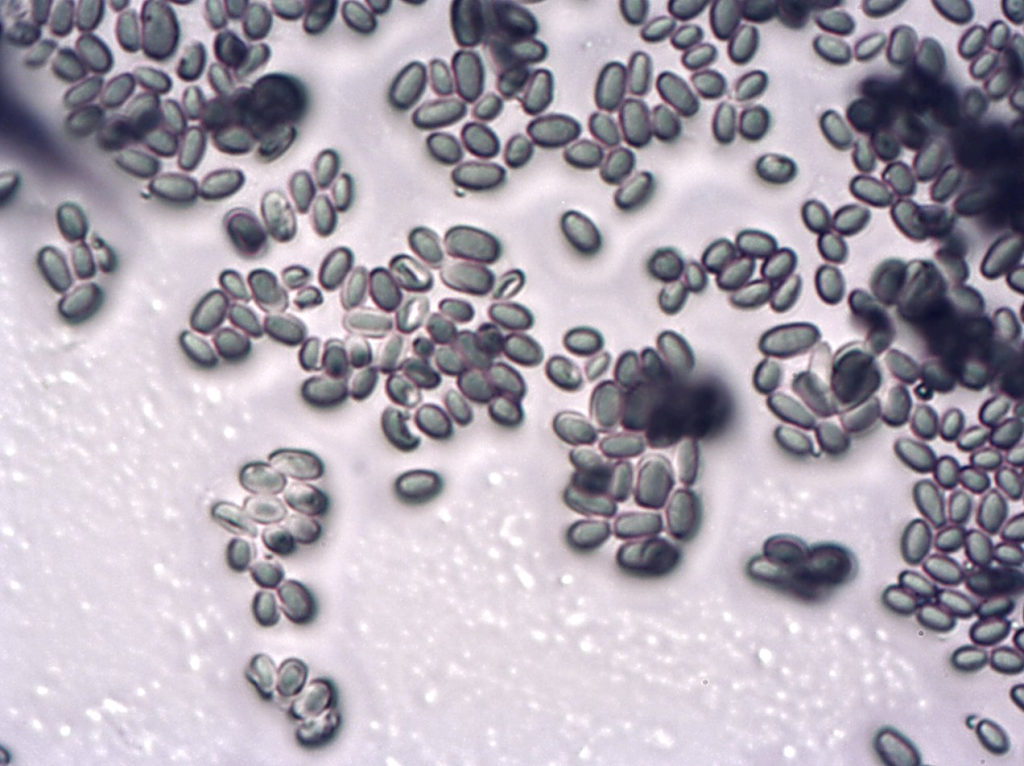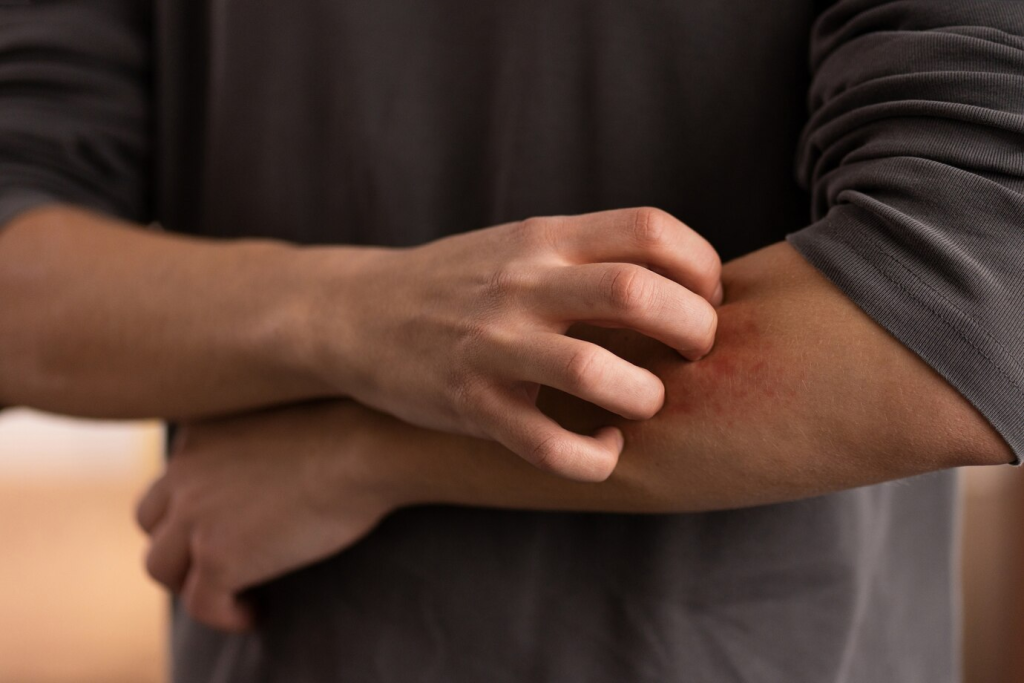
Mold is a common household problem that often goes unnoticed. While every house probably has some mold spore, it becomes a problem, especially when spores are greater than what is found outside.
According to a study, 47% of residential buildings in the US have visible mold. Moreover, 21% of asthma cases in the US are linked to dampness and mold. The cost of mold remediation can range from $1373 to $3325, with an average expense of $2347.
While there are several types of mold, the most toxic form of mold is black mold, which can lead to mold toxicity.
What is Mold Toxicity?

There are over 270 species of mold. However, some of them are more harmful as they produce mycotoxins—toxic compounds that can lead to various health issues. Mold toxicity or mycotoxicosis refers to a health issue caused by exposure to these mycotoxins.
The severity of mold symptoms and effects can vary with:
- Type of mold
- Duration of mold
- Type of mycotoxin
- The immune system of an individual
How Does Mold Exposure Happen?
Mold spores are lightweight and can easily become airborne. So, when an individual inhales, ingests, or comes into direct contact with mold spores or mycotoxins, it can lead to respiratory issues or trigger allergic reactions, skin irritation or dermatitis, food poisoning, and other health issues.
Some individuals are relatively more susceptible to the effects of mold exposure than others because of:
- Weak immune system
- Existing health condition
- Age
- Genetic predispositions
- Chronic illness
- Prolonged exposure
10 Warning Signs of Mold Toxicity
Prolonged mold exposure can lead to several chronic health issues, especially if not addressed promptly. Recognizing the signs of mold toxicity is crucial. Not only does it help in early detection but also ensure that you get the right treatment on time.
So, here are the common signs you should pay attention to:
Persistent Respiratory Issues

In cases of mold toxicity, respiratory problems are likely to be observed. Mold spores can enter your home environment through heating and air conditioning systems, through windows, and during cleaning. Mold spores can also be ingested or absorbed through the skin, and when airborne, they can be inhaled deep into the lungs, causing respiratory problems.
Common signs of respiratory diseases include:
- Coughing
- Sneezing
- Sore throat
- Wheezing
- Breathing difficulties
- Asthma attacks
- Chest pain
- Runny nose
- Itchy eyes
If you or your family member feel any of these symptoms, then it is very likely that there is mold in your house. If it occurs, one should consult a doctor. You can also consult professional mold remediation in New Jersey who will help remove the mold and enhance the air quality of your home.
Frequent Headaches

Headaches are one of the symptoms of mold toxicity, and if one has a constant headache, one should check for mold. However, headaches are not the only signs you are likely to develop because of mold in your home. There are various causes of headaches.
Mold spores are small and can float through the air and easily enter your indoor environment, leading to poor indoor air quality. Breathing in mold spores can also cause respiratory problems such as headaches, migraines, and sinus issues. You may also feel pain in specific areas of the face, like the cheekbone, inner ear, or nose.
Therefore, if you often get headaches, it is advisable to improve the air quality inside your home. Search for any signs of mold in your home, such as the musty odor, mold growth, water damage, water spots, loose wallpaper, and more.
Skin Irritation and Rashes

Skin rashes, itching, hives, or redness are the signs that may be experienced in case of mold toxicity. If there is mold in your home, then it is very easy for mold spores to come into contact with your skin. Thus, your immune system reacts and produces antibodies and inflammation as a response to the allergen. This results in different skin reactions, such as a rash.
Mold exposure can also cause skin fungal infections, especially if it is prolonged. That is why it is necessary to take immediate action and address mold issues as soon as possible. If you experience constant skin reactions, you may also require medical help.
Eye Irritation

Red, itchy, or watery eyes are common reactions to mold exposure. This irritation can also be accompanied by blurred vision. However, some people also experience swelling and sensitivity to light, especially in severe cases. Not only can this lead to discomfort but also impact your daily life.
Conjunctivitis refers to inflammation of the conjunctive – the membrane that covers the inside of your eyelids and the whites of your eyes. When allergens like mold spores get trapped under your eyelids, they can irritate your eyes.
If you have symptoms of eye irritation from mold, wash your eyes with water and talk to your doctor. Also, schedule an appointment with mold inspection specialists for expert advice on mold remediation.
Sinus Congestion

Mold can cause chronic sinus infections. Common signs of sinus congestion due to mold are:
- Nasal Congestion
- Headache
- Pain in cheeks and between the eyes
Some individuals, especially those with weak immune systems, are more susceptible to mold toxicity. If mold is present in your home, it makes its way to the sinus cavity. As a result, your body reacts and releases a chemical known as eosinophils to fight the fungus. This chemical is what causes sinus congestion.
Note: Mold thrives in damp and dark environments. So, getting rid of fungal infections can be difficult, as the sinus cavity is an ideal place for mold growth.
The most effective way to get rid of mold is to ensure your home is well-ventilated. You can also use dehumidifiers to improve your indoor air quality. Also, ask a mold remediation specialist to inspect your home for mold signs.
Fatigue and Weakness

If you feel tired and lethargic all day, it may be a sign of mold toxicity. Since mold exposure can significantly impact your health, it is natural to experience low energy levels.
Not only can this impact your daily life activities, but it can also make your life challenging, especially if you lead a busy life and have a demanding job.
At times, addressing the mold issue ASAP is crucial. Also, try enhancing your surrounding environment, take a break, and seek medical advice.
Cognitive Difficulties

Mold exposure can also cause neurological issues that can impact your cognitive functioning. So, it is recommended to recognize the signs of mold early to avoid long-term health issues.
Some of the common signs of cognitive impairments are:
- Memory loss
- Difficulty in concentration
- Brain fog
- Language problems
In severe cases, you may struggle with:
- Decision-making
- Disorientation
- Confusion
As already mentioned, mold spores can trigger your immune system. This can lead to inflammation throughout the body, including the brain, impairing cognitive functions. These effects may last a lifetime, especially in severe cases of chronic inflammation.
If you notice any of these symptoms of mold, it is crucial to seek medical attention to determine whether mold spores are the culprit.
Unexplained Muscle and Joint Pain

Mold toxicity can result in fungal arthritis – it is a condition caused when mold spores come into contact with a joint during trauma or surgery.
It may also occur if you ingest or inhale mold spores, which reach your joints via blood. While fungal arthritis is rare, it can cause unexplained pain, swelling, and inflammation in joints. People with weak immune systems are prone to this kind of infection.
Common symptoms of mold toxicity include:
- Joint pain
- Stiffness
So, if you experience pain or stiffness in your joints without a clear reason, it can be due to mold exposure. Keeping an eye on the symptoms is a great way to address this problem, and you should consider having mold experts to get rid of mold in your house.
Allergic Reactions

Mycotoxin exposure can trigger various allergic reactions, including:
- Allergic fungal sinusitis
- Allergic rhinitis
- Eczema
- Itchy throat
- Itchy skin
- Watery eyes
This can be due to touching, inhaling, or ingesting mold spores through the skin, nose, or mouth, respectively. Depending on your immunity, you can experience allergic reactions after single or repeated exposure.
If you experience any of these symptoms, consult your doctor. They may help you identify the reasons for allergic reactions and suggest appropriate treatment.
Mood Swings and Depression

Mood changes, depression, anxiety, and poor mental health are common signs of mold toxicity. Mold spores can impact the neurotransmitter function of the brain. It reduces the production of dopamine and serotonin.
In addition, mycotoxins can cause loss of sleep, which can further lead to emotional and mental issues. So, if you find any symptoms of mood swings or depression that seem to appear out of nowhere, seek immediate medical attention.
The Bottom Line
Now that you know how mold can impact your health and what mold toxicity symptoms are, what are you waiting for? Find a reliable mold remediation service provider who can inspect every nook and corner of your house and help you get rid of nasty mold spores.
At Above & Beyond, we have certified mold remediation and removal experts with over 20 years of experience handling mold infestations easily. We use state-of-the-art technology to ensure a safe and healthy environment.
Get in touch with us today for a free consultation and inspection!